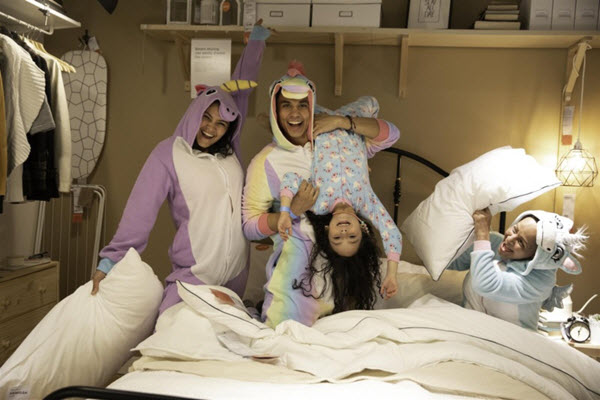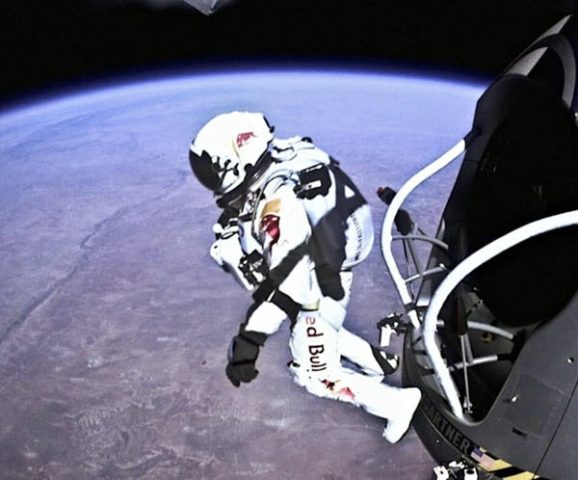Business Owners: Check Out The Experiential Marketing
By Sofia Wilton
January 10, 2024 • Fact checked by Dumb Little Man

Why do we wait in line to get a table at a popular restaurant, even though they deliver the same food at our doorstep? Why do we spend a substantial amount of money buying tickets for a football final when the same match can be viewed live from the comfort of our living room? Why do we go to an apparel store when online shopping is cheaper and gets you free home delivery? Simple, to immerse ourselves in the power of experience!
Humans are cerebral beings who want to get stimulated by interacting with their environment. After all, one wants to experience life rather than merely surviving it! And that is possible by actively being a part of something rather than witnessing it from a distance, or via a technological conduit as is common today.
Not all events can be experienced through a unique combination of sight, sound, taste, and smell, but the ones that can leave a profound impact on our psyche. And this philosophy is at the very foundation of experiential marketing.
In today’s age of information, potential clients demand personalized and meaningful interaction with a brand before they decide to make a purchase. Therefore, experiential marketing is irreplaceable in today’s marketing landscape. If your marketing team is not coming up with immersive experiences for your target audiences, you stand to lose to the competition.
Now, does experiential marketing sound like a good strategy to convert prospects? If yes, then keep reading to know more about this tactical technique along with several examples.
What Is Experiential Marketing?
Also known as engagement marketing, experiential marketing is a strategical move that invites target audiences to interact with your brand in a real-world scenario. The effect generated by experiential tactics stays far longer with the client than when they are exposed to passive advertisements.
You must be thinking that this technique sounds a bit like event marketing, but it’s not! There may be a slight overlap between the two; however, experiential campaigns are event-centric and not brand-centric.
At its foundation, experiential marketing creates a genuine connection between your brand and customers. Rather than pitching your product and its features to a passive audience, an experiential marketing strategy is designed to engage clients with your brand’s identity and offerings actively.
McKinsey’s report revealed that experiential marketing, when done right, is a powerful catalyst for word-of-mouth publicity. The report concluded that 50 to 80% of all word-of-mouth publicity took place because of immersive branded experiences.
Brands that Use Experiential Marketing Remarkably
Now that you know the theory behind the main act, let us look at a few killer manifestations of marketing strategies by certain brands that used the power of experience.
The Ikea Slumber Party

Who does not know of the Swedish furniture and lifestyle giant Ikea? But, do you know that the brand hosted a sleepover for a hundred people in their warehouse, where they keep a universe of beds and linens? The participants could move around and choose from the delightful variety of furniture to pass out on.
Ikea accommodated this request for the members of their Facebook fan page titled “I wanna have a sleepover at Ikea.” The minute the brand announced the sleepover, over 100,000 people joined this group, out of whom a hundred were selected. During the sleepover, the brand also arranged manicures and massages for their night guests.
But, since the ‘new normal’ warrants the need for minimal contact, you can take the Red Bull approach.
Felix Baumgartner’s 24-Mile Drop Arranged by Red Bull

Remember when Red Bull partnered with an Austrian skydiver Felix Baumgartner to set the world record for the highest dive? The energy drink’s super-terrestrial marketing campaign went live on October 14th, 2012, and you may have caught the live stream. This campaign was affectionately named “Stratos.”
Red Bull manufactures an energy drink, and the brand has always been about intensity, extremity, and stamina. But, with this stunt, they took their marketing content to literally a world-record height. The company housed Felix in a small spherical capsule with a big Helium-filled balloon tied to it that carried his contraption to the stratosphere – 128,000 feet to be precise.
The entire drill starting from Felix’s ascent to him overcoming his fear right before freefalling for 24 miles garnered awe-struck 8 million views, which broke the record of highest live viewing traffic on YouTube. His record jump was re-watched multiple times and is to date a topic of conversation.
Key Takeaways
This experiential campaign taught several marketers the value of an element of surprise and suspense. The novelty of this event compelled the audience to invest and immerse themselves in the experience. It allowed them to feel what Felix must have felt, if only a little.
Even Lean Cuisine’s #WeighThis campaign was a megahit because it focused on weighing the more important dreams of life like being a successful single mom to four kids, caring for 200 homeless children each day, etc., rather than the number on the weighing scale. And the best part is such a campaign can be hosted online!
The bottom line is to create an immersive digital experience for your brand that can stir hearts without having to establish physical contact.
What Makes an Experiential Campaign Great?
So, now you know how an experiential marketing campaign is not the same as a brand event. Before you plan your shindig, let us figure out what separates the successful campaigns from the flops.
Authenticity
Generating an authentic relationship is at the core of an experiential campaign. Therefore, create a unique tactic that embodies your brand’s true identity. Figure out what makes your brand stand out and then design an experience around it.
Storytelling
Figure out your clientele’s pain points and show them they are solvable through your brand. Experiential marketing should understand the need gaps of customers while also showcasing what everyday life could be if the prospects owned your offering.
Following Up
If you have already devised an experiential strategy, don’t launch it before putting a follow-up system in place. Nurture relationships with as many participants as you can even after the experience is over. Doing this helps your brand keep the momentum going and also enables you to launch a retargeting campaign.
User-Generated Content
Good experiential campaigns must compel people to generate content by posting information about your event. User-generated content is consumed fast. You can intervene here just a bit by creating a brand hashtag that people can use to spread the word.
Your Turn
In today’s competitive corporate climate, brands need to become noticeably edgier, and experiential marketing can help with just that. By delivering an experience extraordinaire, you can build long-lasting relationships with your clientele. So, what are you waiting for? Use this guide as a toolkit to begin your journey towards successful experiential marketing.



